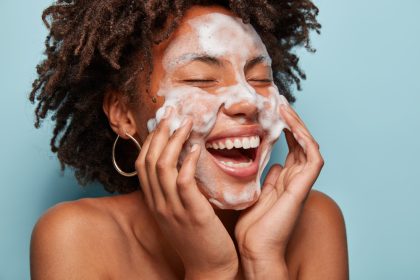What you eat affects your skin more than you might realize — these are the foods skin specialists actively avoid.
The connection between diet and skin health grows clearer with each passing year of research. While skincare products line bathroom shelves nationwide, true skin health begins internally, influenced significantly by dietary choices. Those who specialize in skin health often make calculated decisions about what foods deserve a place on their plates based on professional knowledge that goes beyond conventional nutritional wisdom.
These dietary choices aren’t merely about calorie counts or macronutrients but focus specifically on how certain foods affect collagen production, inflammation levels, hormonal balance, and other factors directly impacting skin appearance and health. Understanding these choices provides valuable insight for anyone seeking to improve their complexion from the inside out.
Processed sugar and its skin-aging effects
At the top of most skin specialists’ avoid list sits processed sugar and high-glycemic foods that cause rapid blood sugar spikes. These foods trigger a process called glycation, where sugar molecules attach to proteins like collagen and elastin, forming harmful new molecules called advanced glycation end products (AGEs).
This glycation process stiffens and damages collagen fibers, the proteins responsible for skin’s bounce and resilience. Once formed, these damaged collagen structures contribute significantly to skin aging through increased wrinkle formation, loss of elasticity, and diminished radiance.
Beyond glycation, sugar consumption increases insulin levels, which boosts sebum production and inflammation—both key contributors to acne development. For those with inflammatory skin conditions like rosacea and eczema, sugar’s pro-inflammatory effects can trigger painful flares, redness, and prolonged healing times.
Skin experts typically avoid obvious sugar sources like candy and soda but remain equally cautious about hidden sugars in seemingly healthy foods like flavored yogurts, granola bars, and many breakfast cereals that can be equally damaging to skin health.
The 9 dairy products that skin specialists shun
While dairy forms a significant part of many diets, skin specialists often approach these foods with caution. Cow’s milk, particularly skim varieties, contains growth hormones and insulin-like growth factor-1 (IGF-1) that can influence human hormone balance and potentially increase sebum production and inflammation.
Many dermatologists notice clear patterns among patients struggling with persistent acne, identifying dairy consumption as a frequent trigger for inflammatory skin responses. The strongest connections appear with:
- Skim milk and non-fat dairy products that contain higher concentrations of hormones than their full-fat counterparts
- Ice cream, which combines dairy with high sugar content creating a double inflammatory effect on skin
- Processed cheese products containing additional preservatives and inflammatory ingredients beyond basic dairy
- Whey protein supplements that deliver concentrated forms of dairy proteins linked to increased sebum production
- Milk chocolate, combining dairy’s hormonal effects with sugar’s glycation damage
- Creamy coffee drinks blending dairy with hidden sugars and sometimes artificial flavors
- Yogurt parfaits and sweetened yogurts containing added sugars alongside dairy’s inherent hormonal components
- Cream-based soups that often include inflammatory dairy alongside sodium and preservatives
- Processed frozen meals containing dairy-based sauces with preservatives and artificial ingredients
The relationship between dairy and skin problems varies considerably among individuals, with genetic factors and processing tolerance playing significant roles in how one’s skin responds. Some people experience dramatic skin improvements within weeks of reducing dairy intake, while others may notice more subtle effects over longer periods.
Why alcohol tops the “skin-damaging” list
Few substances affect skin health as rapidly and visibly as alcohol. Beyond its immediate dehydrating effects, alcohol impacts skin through multiple pathways that concern skin specialists:
Alcohol acts as a vasodilator, expanding blood vessels and potentially worsening conditions like rosacea while contributing to facial redness. This blood vessel expansion, when chronic, can lead to permanently enlarged capillaries visible on the skin’s surface, especially around the nose and cheeks.
The dehydration effect pulls moisture from skin cells, emphasizing fine lines and creating a dull, lackluster appearance even after a single night of drinking. This dehydration disrupts the skin barrier function, making skin more vulnerable to environmental damage and irritation.
Alcohol metabolism prioritizes liver processing, diverting nutrients that would otherwise support skin health and collagen production. This nutritional diversion leaves skin cells undernourished during periods of alcohol metabolism.
Different alcoholic beverages bring additional concerns, with mixed cocktails combining sugar with alcohol for intensified skin damage, and wine containing sulfites that some skin specialists believe may trigger inflammatory responses in sensitive individuals.
The salty snacks tied to under-eye puffiness
High-sodium foods rank prominently on skin specialists’ avoid lists due to their direct impact on fluid retention and inflammation. Salt attracts and holds water in the body’s tissues through osmosis—including facial tissues—leading to visible puffiness, particularly around the delicate eye area.
Processed foods contain surprisingly high sodium levels, often with a single serving exceeding daily recommendations. Common culprits include:
Packaged snack foods like chips and pretzels deliver concentrated salt doses alongside inflammatory oils and preservatives. These combination effects can trigger both immediate puffiness and longer-term inflammation.
Canned soups and broths often contain more sodium in a single serving than the recommended daily intake. This sodium concentration can lead to noticeable facial bloating within hours of consumption.
Restaurant meals, particularly from chain establishments, typically contain significantly more sodium than home-cooked alternatives, contributing to morning-after facial puffiness many attribute mistakenly to poor sleep.
Beyond temporary puffiness, chronic high-salt diets contribute to overall inflammation and may exacerbate conditions like acne and rosacea through systemic inflammatory responses that manifest in the skin.
The margarine and vegetable oil problem
Trans fats found in partially hydrogenated oils and some margarines contribute significantly to cellular inflammation, a primary concern for skin health. These fats change the composition of cell membranes, affecting how cells respond to damage and environmental stress.
Many vegetable oils used in processed foods contain high levels of omega-6 fatty acids without balancing omega-3s. This imbalance promotes inflammatory pathways in the body that can manifest as skin problems, including increased sebum production and impaired healing.
The worst offenders include hydrogenated oils found in shelf-stable baked goods, microwave popcorn, and some margarines. These products contain artificial trans fats directly linked to decreased skin elasticity and accelerated aging through collagen damage.
Even some cooking oils considered healthy can become problematic when heated beyond their smoke points, creating free radicals and oxidative damage. These oxidative compounds contribute to cellular aging throughout the body, including skin tissues.
How spicy foods trigger unwanted skin reactions
For those with sensitive skin or conditions like rosacea, spicy foods present particular challenges through their vasodilatory effects. Capsaicin, the compound that gives chili peppers their heat, triggers temporary blood vessel dilation, leading to facial flushing.
While this flushing is temporary for most people, repeated episodes can eventually lead to permanently enlarged blood vessels, visible as persistent facial redness. For those already managing rosacea, even occasional spicy meals can trigger flares lasting days.
The inflammatory response to spicy foods extends beyond visible redness, potentially exacerbating acne by increasing overall systemic inflammation. This heightened inflammatory state can trigger breakouts even in people who don’t experience noticeable flushing.
Skin specialists don’t necessarily recommend complete avoidance of spicy foods for everyone but suggest careful moderation for those with reactive skin conditions or noticeable sensitivity to these ingredients.
The fast food connection to acne flares
The combination of ingredients in typical fast food meals creates a perfect storm for skin problems. These meals generally combine refined carbohydrates, processed oils, sodium, and dairy—all independently problematic for skin health.
The cooking methods used for fast food often involve high-temperature frying that creates advanced glycation end products (AGEs), contributing to collagen damage and premature aging. These compounds form when proteins or fats combine with sugars during high-heat cooking.
Studies examining fast food consumption patterns consistently find correlations with increased acne severity across age groups. The strongest connections appear with fried foods and high-glycemic offerings like french fries, white bread buns, and sweetened beverages.
Beyond direct skin effects, fast food’s impact on gut health may create secondary skin problems through the gut-skin axis. Disrupted gut microbiome balance from regular fast food consumption can manifest as inflammation, resulting in skin conditions ranging from acne to eczema flares.
The caffeinated beverages that dehydrate skin
While moderate coffee consumption offers antioxidant benefits, excessive caffeine intake concerns skin specialists due to its diuretic effects. Increased urination without adequate water replacement leads to cellular dehydration that directly impacts skin appearance.
Dehydrated skin cells function less efficiently, showing reduced ability to maintain proper barrier function and elasticity. This diminished function appears visibly as dullness, more pronounced fine lines, and decreased bounce when skin is pressed.
Energy drinks present particular concerns, combining high caffeine levels with sugar and artificial ingredients. This combination can trigger both dehydration and inflammatory responses, potentially worsening acne and other inflammatory skin conditions.
The acid content in many caffeinated beverages, particularly sodas, may disrupt the body’s acid-alkaline balance, creating internal conditions that some skin specialists believe contribute to inflammatory reactions visible in the skin.
The artificial ingredients linked to skin sensitivity
The final category on skin specialists’ avoid lists encompasses artificial ingredients found throughout the modern food supply, particularly artificial sweeteners, colors, and preservatives. These compounds can trigger reactions in sensitive individuals through several mechanisms.
Artificial sweeteners like aspartame and sucralose may disrupt gut bacteria balance in some individuals, potentially triggering systemic inflammation that manifests in skin problems. While not universal, some people experience notable skin improvements when eliminating these compounds.
Food dyes, particularly petroleum-based artificial colors, can act as allergens or irritants for sensitive individuals. These reactions may present as hives, redness, or general irritation that appears randomly without clear connection to colored foods consumed days earlier.
Preservatives like sulfites, nitrates, and BHA/BHT extend food shelf life while potentially triggering inflammatory responses in sensitive individuals. These preservatives appear most commonly in processed meats, wines, dried fruits, and shelf-stable baked goods.
The skin specialists most adamant about avoiding artificial ingredients generally work with patients experiencing unexplained skin sensitivities or autoimmune skin conditions that respond positively to elimination diets removing these compounds.
How to build a skin-friendly diet
Understanding what foods skin specialists avoid provides valuable insight, but creating a positive diet focused on skin health matters equally. The foundation of skin-supporting nutrition includes:
Antioxidant-rich fruits and vegetables that fight free radical damage and support collagen production. Deeply colored produce like berries, leafy greens, and orange vegetables provide particular benefit through their high vitamin and phytonutrient content.
Healthy fats from sources like avocados, olive oil, and fatty fish that support skin barrier function and provide essential fatty acids for cellular health. These fats help maintain skin moisture from within, complementing topical hydration efforts.
Adequate protein intake to provide the building blocks for ongoing collagen and elastin production. Quality protein sources like beans, lentils, eggs, and lean meats support the constant renewal process of skin cells.
Hydrating foods with high water content complement drinking plain water, supporting overall cellular hydration. Cucumbers, watermelon, and citrus fruits contribute significantly to hydration while providing additional skin-supporting nutrients.
Proper nutrition for skin health doesn’t require perfection but rather awareness of how dietary choices influence skin appearance and function. By minimizing the most problematic foods while emphasizing those that support skin health, significant improvements often emerge within weeks.
The skin specialists who avoid these nine food categories consistently aren’t following arbitrary rules but responding to clear patterns observed throughout years of clinical practice. Their dietary choices reflect professional understanding of the intimate connection between what enters the body and what eventually shows on its surface.













